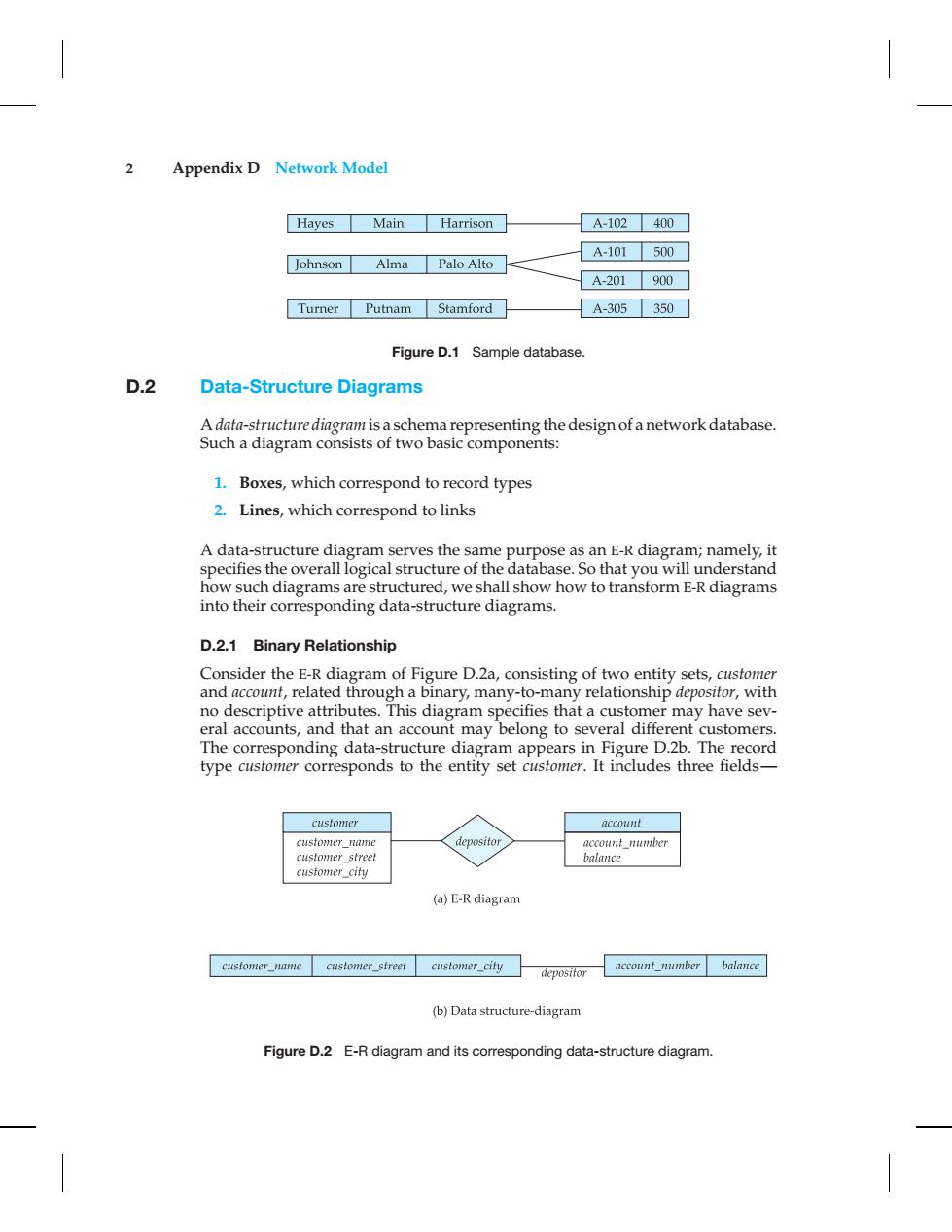正在加载图片...

2 Appendix D Network Model Hayes Main Harrison A-102400 A-101500 Johnson Alma Palo Alto A-201 900 Turner Putnam Stamford A-305350 Figure D.1 Sample database. D.2 Data-Structure Diagrams A data-structure diagram is a schema representing the design of a network database. Such a diagram consists of two basic components: 1.Boxes,which correspond to record types 2.Lines,which correspond to links A data-structure diagram serves the same purpose as an E-R diagram;namely,it specifies the overall logical structure of the database.So that you will understand how such diagrams are structured,we shall show how to transform E-R diagrams into their corresponding data-structure diagrams. D.2.1 Binary Relationship Consider the E-R diagram of Figure D.2a,consisting of two entity sets,customer and account,related through a binary,many-to-many relationship depositor,with no descriptive attributes.This diagram specifies that a customer may have sev- eral accounts,and that an account may belong to several different customers. The corresponding data-structure diagram appears in Figure D.2b.The record type customer corresponds to the entity set customer.It includes three fields- customer account customer name depositor account_number customer_street balance customer_city (a)E-R diagram customer_name customer_street customer_cily account number balance depositor (b)Data structure-diagram Figure D.2 E-R diagram and its corresponding data-structure diagram.2 Appendix D Network Model Figure D.1 Sample database. D.2 Data-Structure Diagrams A data-structure diagram is a schema representing the design of a network database. Such a diagram consists of two basic components: 1. Boxes, which correspond to record types 2. Lines, which correspond to links A data-structure diagram serves the same purpose as an E-R diagram; namely, it specifies the overall logical structure of the database. So that you will understand how such diagrams are structured, we shall show how to transform E-R diagrams into their corresponding data-structure diagrams. D.2.1 Binary Relationship Consider the E-R diagram of Figure D.2a, consisting of two entity sets, customer and account, related through a binary, many-to-many relationship depositor, with no descriptive attributes. This diagram specifies that a customer may have several accounts, and that an account may belong to several different customers. The corresponding data-structure diagram appears in Figure D.2b. The record type customer corresponds to the entity set customer. It includes three fields— Figure D.2 E-R diagram and its corresponding data-structure diagram